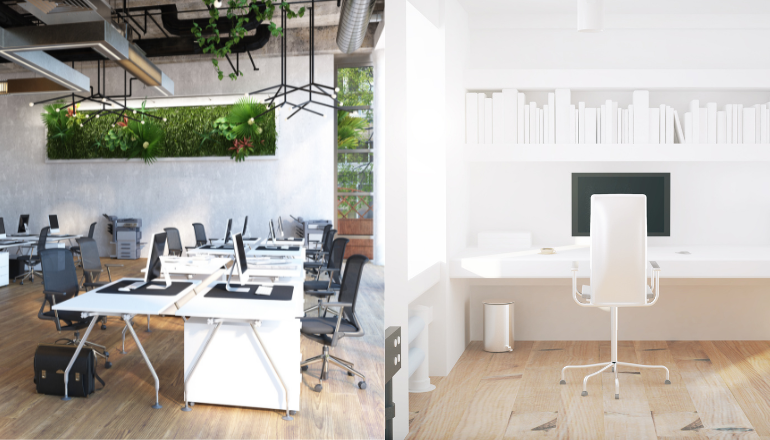Everybody loves colour. Whether you’re fonder of the brighter hues or more neutral tones, it helps bring meaning to our world. We don’t often think about what specific colours themselves mean, though, on a conscious or subconscious level. As office spaces have evolved over the years, colour has become vital in making them more comfortable and productive as we better understand colour psychology.
But how can colour psychology help us create the best workplaces possible? Consider the colours in your office and how they make you feel, consider the colours that make you feel energised and productive, serene, or creative. Combining colours that inspire such feelings creates well-balanced workplaces proven to produce better worker output – the colours surrounding us influence our moods more than we realise.
When discussing workplace colour, we’re not just talking about the shade in which you paint your walls. You should also extend your understanding of colour theory beyond the walls to include furniture, flooring, fixtures, and accessories. Adding plants and warm lighting can also make a space feel more welcoming and improve well-being. As different colours can resonate with people in different ways, there are benefits to carefully thinking about your colour choices for specific areas or rooms: for example, use brighter, creative, and energising colours for meeting rooms and calmer, restful hues for break rooms. If in doubt – discuss any redecorating with your employees, who, after all, will be affected by your colour choices every day.
To help you get started, we have outlined the impact of different colours below:
- Green: is considered serene and restful and is the most most used colour in office design. Being reminiscent of the colours in nature allows greens to influence your mental health and energy subtly.
- Lighter shades of blue: are also standard in workspaces, conjuring associations with a still blue sky or calm ocean seas. Lighter blues increase productivity, help reduce stress, and even lower heart rate and blood pressure, bringing peace and security. However, darker shades of blue should be avoided, as they can induce sadness and melancholy, slowing productivity.
- Orange & Yellow: We often think of orange and yellow as loud, yet pastel shades are helpful in office spaces without being overpowering. Orange lends energy, enthusiasm, and creativity to a workplace, while yellow brings positivity and optimism. It can be a great choice for workspaces where creativity and innovation are important.
- Purple: is a versatile colour, it can evoke a variety of feelings depending on the shade. Purple straddles the line between soothing and uplifting energy.
- Neutral colours such as white and grey: allow for freeness of thought and easily adapt to any space. Too much white can create dullness and blandness, so accentuate white walls with brighter colours in your furniture or accessory choices. While too much black can overwhelm a room and make it feel smaller, adding it into a space in moderation gives a modern, sophisticated feel and grounds a space.
- Red: is often associated with passion, excitement, and intensity. It can create a sense of urgency and stimulate productivity, making it a popular choice for fast-paced work environments.
As office fit-out experts, we know that office colour psychology not only can help to improve your employee’s productivity and well-being but it also affects how visitors evaluate your business, so it is essential to choose the appropriate colour scheme to adequately present yourself to both external and internal audiences alike.
If you have any question, please reach out to our inhouse Office Interiors Specialist DAVID LILLIS on 087 3484659 to discuss ideas and prices or to arrange a complimentary consultation.




Leave a Reply
You must be logged in to post a comment.